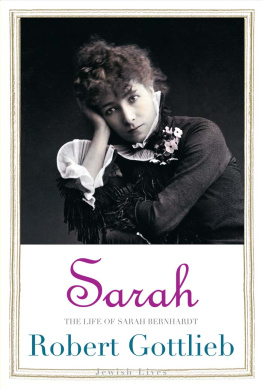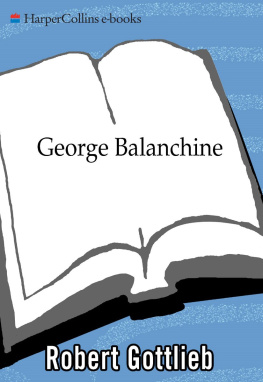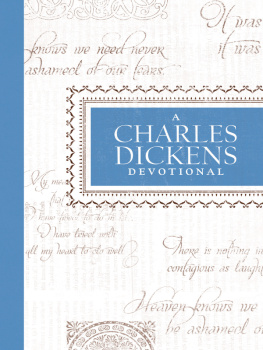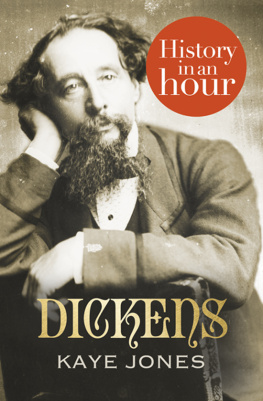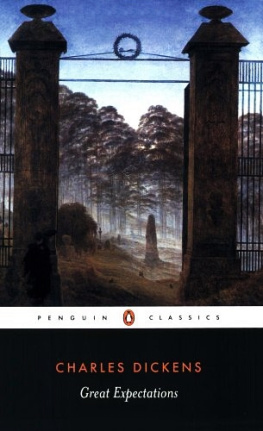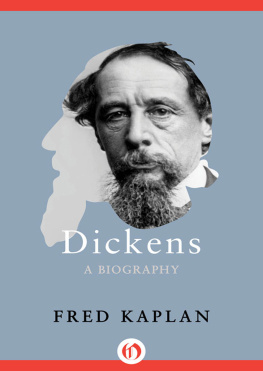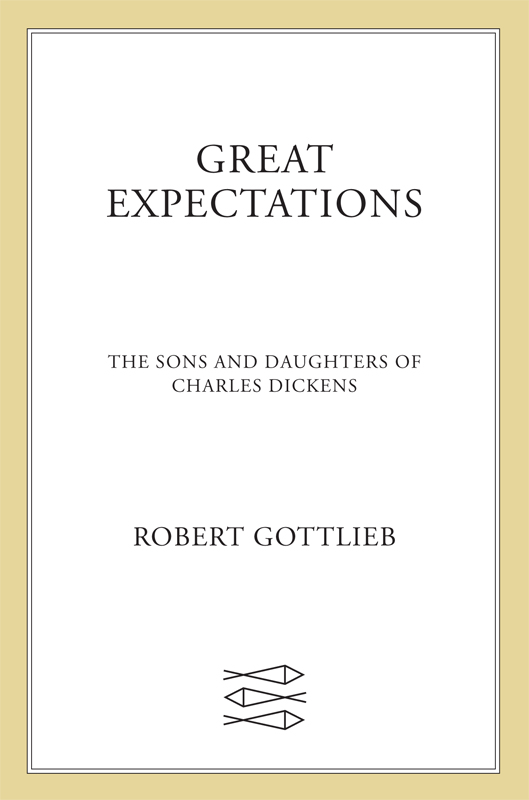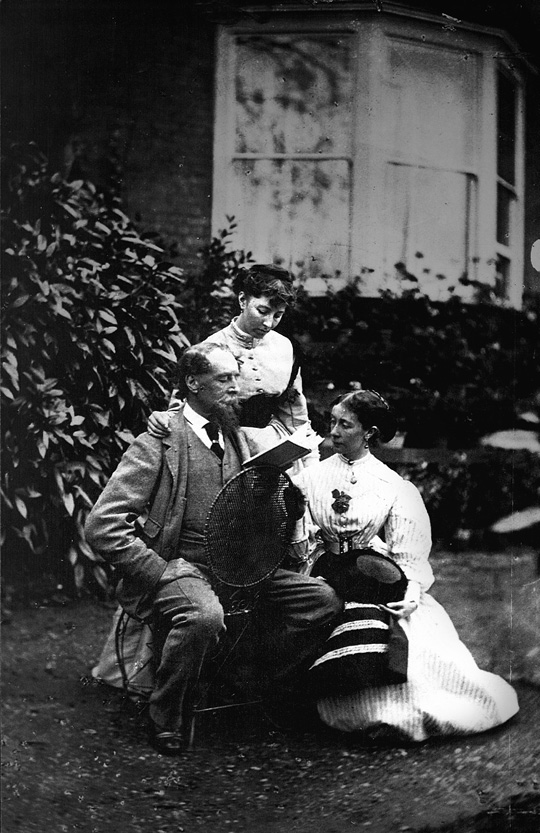

The author and publisher have provided this e-book to you for your personal use only. You may not make this e-book publicly available in any way. Copyright infringement is against the law. If you believe the copy of this e-book you are reading infringes on the authors copyright, please notify the publisher at: us.macmillanusa.com/piracy.
Contents
For my parents, Charles and Martha Gottlieb, fanatical readers, whose marriage in some ways seems to me to reflect the Dickens marital dynamic. Perhaps my sympathy for the children of Charles Dickens stems from this identification, while being a father allows me to sympathize to a certain extent with his frustrations. Although my children, of course, are perfect.
THE DICKENSES
W HEN CHARLES DICKENS and Catherine Hogarth were married on April 2, 1836, he was twenty-four and she was almost twenty-one. He had recovered from his tortured infatuation with the flirtatious Maria Beadnell and was well on his way to establishing himself as a clever and an admired young writer.
Charles had endured a difficult childhood: When he was eleven, his father, a well-meaning but improvident clerk in the navy pay office, was sent to debtors prison, with young Charles put to menial work in a blacking factorya social disgrace that demoralized him and from which he never fully recovered, keeping it a secret from the world (even from his children) until his death. The fact that, beginning in his mid-teens, he swiftly made his way as a law clerk, a parliamentary shorthand reporter, and an instant success as a writer of comic sketches, the very popular Sketches by Boz , is testament not only to his immense innate talent and overwhelming ambitions but to his prodigious and unrelenting energy and drive. Nothing could have stopped him.

Dickens painted by Daniel Maclise, 1839
Class was, as always in England, a matter of consuming concern. (Throughout his life, the question would arise as to whether Dickens was, at bottom, actually a gentleman.) Catherines family, the Hogarths, were steps up the social ladder from the Dickenses. Her father, who had moved south from Edinburgh, where he had been part of the Walter Scott circle, was now a respected London journalista music critic and the editor of the Evening Chronicle , for which Charles was actively writing. The family was cultured, cultivated, and relatively affluent; Catherine, the eldest of the nine Hogarth children, was well-bred, well-read, and charming. And pretty. She and Charles quickly made a match of it.
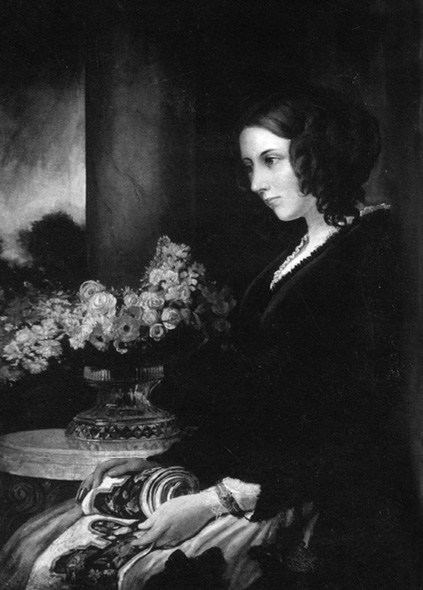
Catherine Dickens painted by Daniel Maclise, 1839
Charles would later maintain that it was never really a love match, but it was certainly a close and affectionate one, as is demonstrated in Dickenss devoted early letters to her. And a highly sexual one. Charley Dickens was born just nine months after the wedding, and the rate at which the other children followed (as well as at least two miscarriages), plus the references in letters to his friends to his impatience for the prescribed weeks to elapse following each birth before he could reclaim his marital rights, make it clear that his sexual needs were urgent. It seems likely that after his separation from Catherine, as well as before his marriage, he had recourse to prostitutes (in an 1840 letter he wrote that prostitutes were willing and consenting parties, and exclaimed Good God if such sins were to be visited upon all of us and to hunt us down through life, what man would escape!); in his later years he was treated at least once for a venereal condition. Certainly he was not a prude. If his own son were particularly chaste, he told Ralph Waldo Emerson, who quoted him in his journals for 1848, I should be alarmed. (That must have been an interesting conversation.) Since at the time, however, his oldest son, Charley, was only eleven, it was not a pressing problem.
It is also indicative that in the later years of his marriagethat is, through the 1850sDickens grew more intimate with his new and younger friend and collaborator, Wilkie Collins, whose triumphant novels The Woman in White and The Moonstone appeared in Dickenss magazine All the Year Round , and with whom he both tramped through the nighttime streets of London and traveled abroad. Collinss domestic life was highly irregularhe kept two concurrent semi-marital yet unacknowleged establishmentsas opposed to that of Dickenss greatest friend and future biographer, John Forster, whom he trusted totally but who was hardly a rollicking companion.
As Catherine grew stouter and more exhaustedthose dozen or so pregnancies in fifteen years, plus severe post-partum depressionsand to his mind duller, his flirtations with and attentions to other women grew more active, though they were never of a scandalous nature (except to his wife, who not surprisingly was jealous).
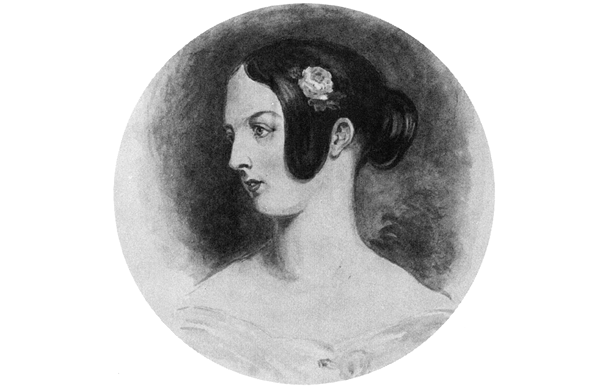
Mary Hogarth
She did not, however, appear to be jealous of the young woman he adored above all othersher own younger sister Mary, who had begun living with the Dickenses soon after their marriage. In January 1837 Charley was born, with Mary on hand, and when two months later the family moved into their new home on Doughty Street in Bloomsbury (now the Dickens Museum), Mary was permanently with them, helping with the baby and the housekeeping. She was seventeen. One night that May, after returning from the theater with her sister and brother-in-law, she was struck by a fatal heart attack and died in Charless arms the following day. His grief was violent, even unnatural. For the only time in his career he was unable to write, breaking off his work on Pickwick Papers and Oliver Twist , both of which were appearing serially. He insisted that when he died he must be buried with her, and wore her ring for the rest of his life, dreaming of her and turning her into an eternal symbol of purity and perfection. God numbered her among His angels was the epitaph he composed for her tombstone. And he re-embodied her in all the virginal girlsdaughters, sisters, persecuted orphansof his fiction, beginning with Rose Maylie, the insipid heroine of Oliver Twist . Soon, Mary was replaced in the Dickens household by Catherines next sister, Georgina, who in time would become the mainstay of the family.
Catherine represented all the messy business of lifesex, childbirth, ill health. Mary was the holy symbol of maidenhood, now beyond reach: the angel. Georgina was the devoted mother/sister. In 1857 he met Ellen Ternan, who combined the sexual with the idealjust eighteen (the age of his daughter Kate), a pretty, clever, though not very talented actress with whom he fell desperately and permanently in love. He was forty-five, tired of his wife, feeling the first signs of age. (Dickens had been boyish as a young man, and was preternaturally aged for a mature one. His massive workloadas writer, editor, public speaker, reformerwas already undermining his health.) He was determined to make Ellen his, and he succeeded.


